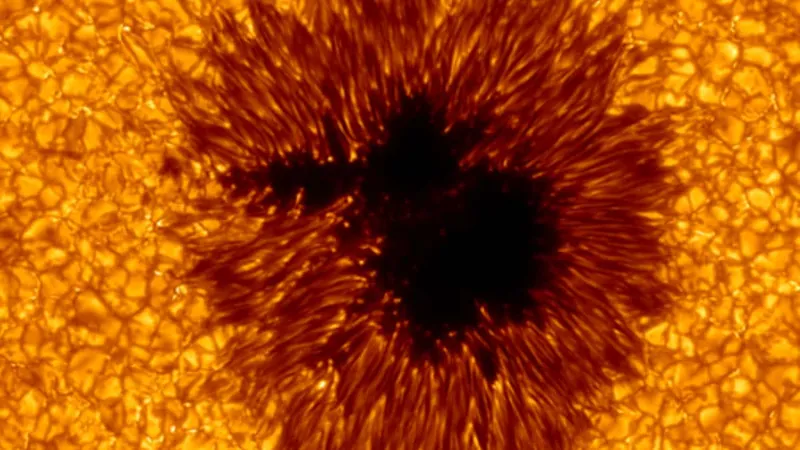
Massive Sunspot Aimed at Earth: Are We Prepared for the Coming Solar Storm?
2024-11-20
Author: Charlotte
Massive Sunspot Aimed at Earth: Are We Prepared for the Coming Solar Storm?
The sun is currently in an extraordinarily active phase, with a colossal sunspot named AR3901 turning its face towards Earth. This sunspot is poised to unleash solar flares in our direction, potentially leading to stunning auroras but also the risk of significant radio blackouts.
Recently, the sun emitted nine M-class solar flares, primarily from this fierce sunspot. Fortunately, Earth was not directly affected by the last batch of flares, but as the sunspot continues to rotate into Earth's line of sight, we may soon feel the impact.
NOAA's Space Weather Prediction Center (SWPC) described the ongoing solar activity as notably high, with ten M-Class flares registering along with minor R1-level flares. The organization noted that the sunspot has made it challenging to assess the situation entirely due to its foreshortened position on the solar horizon.
In fact, one of the largest flares recorded was an M3.7 on November 18, while another long-duration M2.0 flare occurred later that same day. SWPC forecasts indicate that the chances of further M-class flares will remain substantial, with a 55% likelihood for November 20 and climbing to a staggering 60% on November 21. The probability of even more intense X-class flares is at a notable 10% to 15% during this timeframe.
With such high chances of solar flare occurrences, experts warn of several potential disruptions. Solar flares release sudden and intense bursts of radiation from the sun's atmosphere, generating energies equivalent to millions of hydrogen bombs. This high-level activity could lead to radio blackouts, disturbances in satellite communications, and possible GPS inaccuracies. The duration and severity of the blackouts are typically influenced by the intensity of the flares, which are classified into categories (A, B, C, M, and X) based on their X-ray intensity.
As we look ahead to the next few days, scientists advise monitoring space weather updates closely. The effects of these solar flares could ripple out, influencing not just our technology but also the stunning natural displays of the aurora borealis. Are you ready for what the sun might unleash? Stay informed and prepared!









 Brasil (PT)
Brasil (PT)
 Canada (EN)
Canada (EN)
 Chile (ES)
Chile (ES)
 España (ES)
España (ES)
 France (FR)
France (FR)
 Hong Kong (EN)
Hong Kong (EN)
 Italia (IT)
Italia (IT)
 日本 (JA)
日本 (JA)
 Magyarország (HU)
Magyarország (HU)
 Norge (NO)
Norge (NO)
 Polska (PL)
Polska (PL)
 Schweiz (DE)
Schweiz (DE)
 Singapore (EN)
Singapore (EN)
 Sverige (SV)
Sverige (SV)
 Suomi (FI)
Suomi (FI)
 Türkiye (TR)
Türkiye (TR)